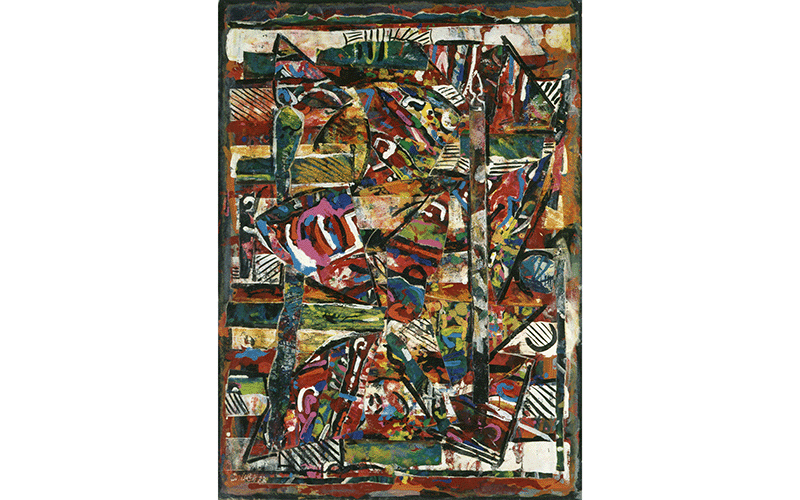- Events & Programs Home
- Calendar
- Accessibility
- Adults
-
Families & Teens
- Families & Teens Home
- 10x10 Teen Art Expo
- Art on the Rise
- Art Together: Art Making for Families with Children Ages 3–5
- Babies Sing with May Festival Minis
- Boy Scouts / Girl Scouts
- CAM Kids Day
- Family Storytime and Gallery Walk
- Family Studio: Art Making for Families with Children Ages 6–12
- Games in the Galleries
- Members-Only Baby Tours
- Public Baby Tours
- REC Reads
- Rosenthal Education Center (REC)
- Saturday Morning Art Class
- See Play Learn Kits
- Summer Camp
- Teen Fest: Zine and Comic Exchange
- RECreate
- Teachers
- Community Outreach
- Fundraisers
- Plan Your Own Event

- Events & Programs Home
- Calendar
- Accessibility
- Adults
-
Families & Teens
- Families & Teens Home
- 10x10 Teen Art Expo
- Art on the Rise
- Art Together: Art Making for Families with Children Ages 3–5
- Babies Sing with May Festival Minis
- Boy Scouts / Girl Scouts
- CAM Kids Day
- Family Storytime and Gallery Walk
- Family Studio: Art Making for Families with Children Ages 6–12
- Games in the Galleries
- Members-Only Baby Tours
- Public Baby Tours
- REC Reads
- Rosenthal Education Center (REC)
- Saturday Morning Art Class
- See Play Learn Kits
- Summer Camp
- Teen Fest: Zine and Comic Exchange
- RECreate
- Teachers
- Community Outreach
- Fundraisers
- Plan Your Own Event
Shaker Chair and Quilt
Shaker Chair and Quilt
- Home
- Plan Your Visit
- Art
-
Events & Programs
- Events & Programs Home
- Calendar
- Accessibility
- Adults
-
Families & Teens
- Families & Teens Home
- 10x10 Teen Art Expo
- Art on the Rise
- Art Together: Art Making for Families with Children Ages 3–5
- Babies Sing with May Festival Minis
- Boy Scouts / Girl Scouts
- CAM Kids Day
- Family Storytime and Gallery Walk
- Family Studio: Art Making for Families with Children Ages 6–12
- Games in the Galleries
- Members-Only Baby Tours
- Public Baby Tours
- REC Reads
- Rosenthal Education Center (REC)
- Saturday Morning Art Class
- See Play Learn Kits
- Summer Camp
- Teen Fest: Zine and Comic Exchange
- RECreate
- Teachers
- Community Outreach
- Fundraisers
- Plan Your Own Event
- Give & Join
- About
- Tickets
- Calendar
- Exhibitions
- Collections
- Blog
- Shop
- Art
- Exhibitions
- What, Me Worry? The Art and Humor of MAD Magazine
- Recall. Reframe. Respond. The Art of Paul Scott
- Rediscovered Treasures
- Special Features
- Upcoming Exhibitions
- Past Exhibitions
- Online Exhibitions
- Explore the Collection
- Provenance and Cultural Property
- Conservation
- Meet the Curators
- Digital Resources
- Art Bridges Cohort Program

Shaker Chair and Quilt, 1988, Encaustic and collage on paper, Bowdoin College Museum of Art, Brunswick, Maine, museum purchase, George Otis Hamlin Fund
Audio Description
Shaker Chair and Quilt from 1988 is encaustic and collage on paper. It is in the collection of Bowdoin College Museum of Art in Brunswick, Maine. It was a museum purchase using the George Otis Hamlin Fund.
This is a vertical abstract painting on paper called Shaker Chair and Quilt. Driskell used a mixture of collage and a wax-based medium called encaustic. In the foreground, there are two vertical posts in dense mixtures of colors, with several horizontal streaks painted in yellow, white, and green, respectively. This is reminiscent of the back support of a wooden Shaker chair. Within that structure are angular shapes featuring brightly colored patterns, some with lines and others with loose or incomplete circles. Behind that is a series of horizontal bands of color that run the length of the paper. They alternate almost randomly in color from white to red to blue, some featuring diagonal line patterns. But there are also accents of orange, pink, and green throughout the background. There is a loose green and blue outline around the painting’s perimeter on the top, bottom, and left edges, which could be the edges of the Shaker quilt. The artist’s signature, “Driskell 88”, includes the year it was painted and is added in white paint in the bottom left corner.
Label Copy
Shaker Chair and Quilt from 1988 is encaustic and collage on paper. It is in the collection of Bowdoin College Museum of Art in Brunswick, Maine. It was a museum purchase using the George Otis Hamlin Fund.
Encaustic is a wax-based medium that can be challenging to use. It provided Driskell an excellent binder for such textured collage materials, such as torn strips of painted paper, while also creating the effect of transparency. When burnished, the melted wax provides a surface that is brilliant and luminous, creating depth wherein the collage elements seem to dance. Shaker Chair and Quilt recalls his mother’s quilting and refers to his deep admiration for Shaker artisans and their furnishings. Driskell frequently visited Sabbathday Lake Shaker Village in New Gloucester, Maine, not far his Falmouth home.
Cincinnati, OH 45202
Toll Free: 1 (877) 472-4226
Museum Hours
Museum Shop
Terrace Café
Library
Cincinnati Art Museum is supported by the tens of thousands of people who give generously to the annual ArtsWave Campaign, the region's primary source for arts funding.

Free general admission to the Cincinnati Art Museum is made possible by a gift from the Rosenthal Family Foundation. Exhibition pricing may vary. Parking at the Cincinnati Art Museum is free.
Generous support for our extended Thursday hours is provided by Art Bridges Foundation’s Access for All program.

General operating support provided by:



